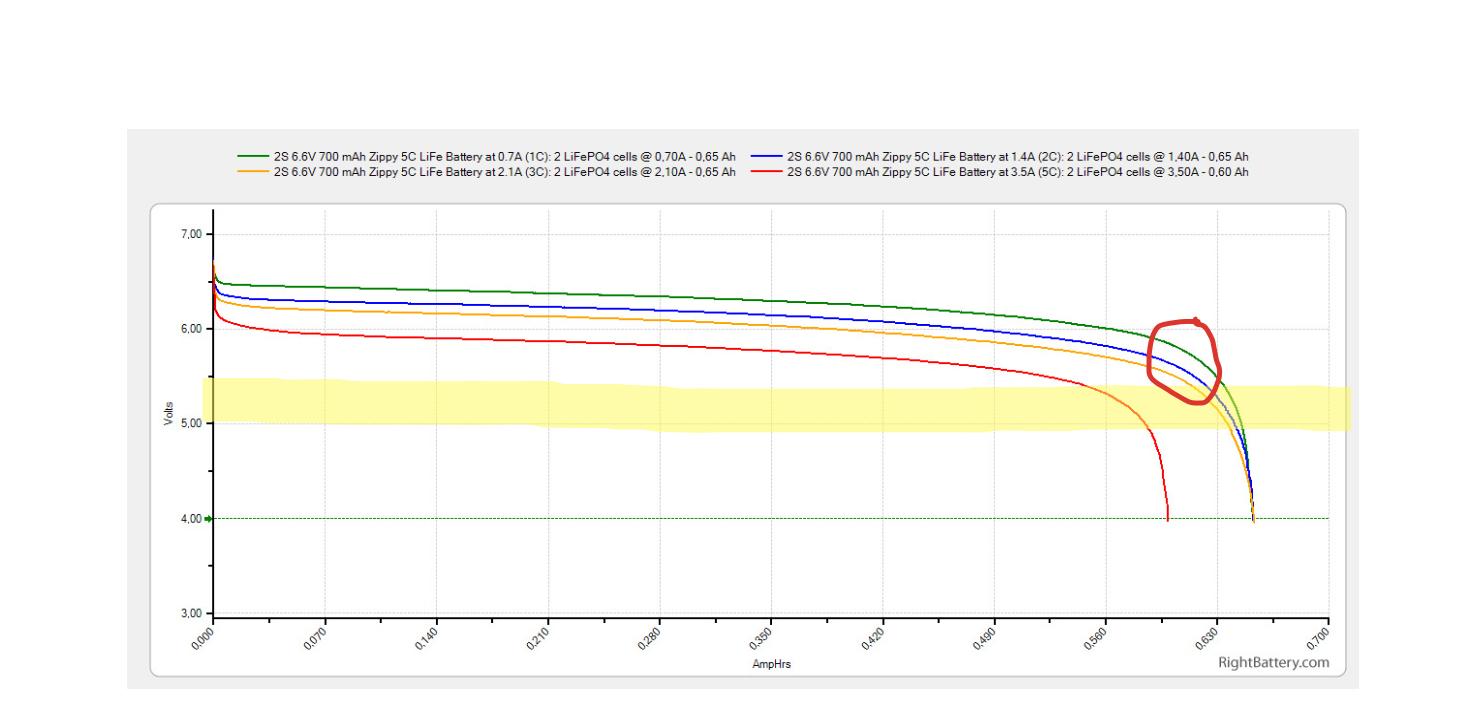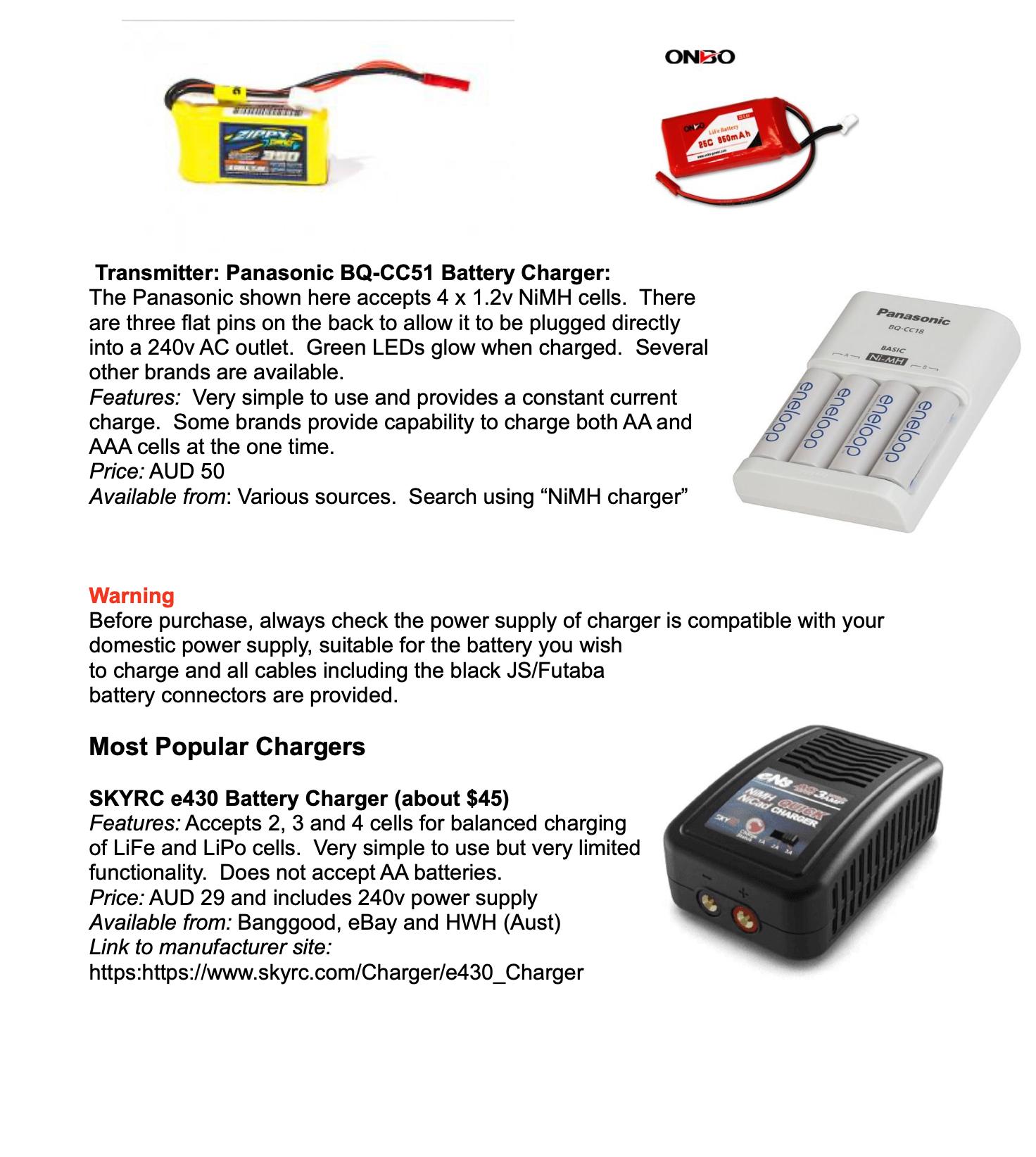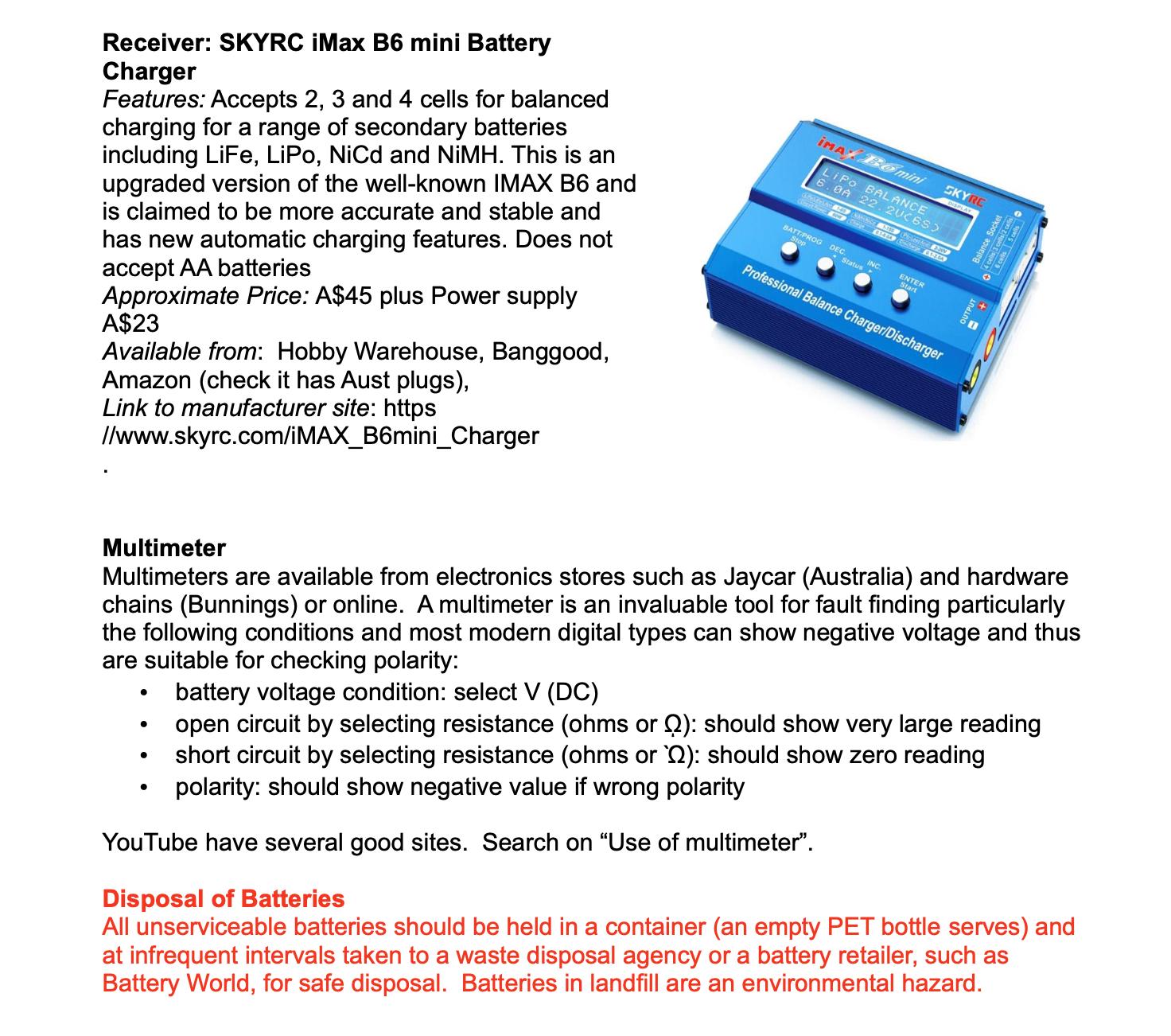› RC BOATING › YACHTING › DF65’s & DF95’s › Tips, Tricks and Settings › UNDERSTANDING OUR BATTERIES
- This topic has 0 replies, 1 voice, and was last updated September 28, 2022 at 4:42 pm by
Admiral.
-
AuthorPosts
-
-
28 September 2022 at 16:42 #12388
Understanding Batteries and Chargers for RC Sailing – Abbreviated Version
David Flakelar & Phil Burgess- Sydney
Introduction
- A working knowledge of the technical issues associated with radio control and in particular on-board servos, and the power supplies required to drive them, is not essential. However, to optimise your time on the water, avoid loss of signal (and money), a good understanding of your battery is essential. So, this paper has been written to help provide some of that knowledge and to hopefully clarify the confusion among some RC sailors.
- Additionally, reference is made to a separate paper by David Flakelar “Set-up of FlySky FS-i6 Transmitter (Tx) and FS-iA6B Receiver (Rx).”

Battery
- There are a large group of rechargeable batteries that include LiFe and LiPo batteries. All are based on the use of a lithium compound as the cathode such as lithium ferrite phosphate (LiFePO4, sometimes shortened to LiFe or LFP, and lithium-ion polymer (LiPo). LiFe batteries are safer to use than LiPo batteries, which are used in mobile phone (which are known to catch fire).
- The winches and servos in the DF boats generally operate in the voltage range of around 5.0-6.6 volts.
- RechargeableAAbatteriesatmaximumchargehold1.2voltseach,so4will provide only 4.8 volts.
Standard AA batteries hold 1.5 volts each, so will provide 6.0 volts with a constantly reducing capacity.
LiFe batteries are preferred because they hold over 6.0 volts for a sustained period – see the discharge chart below.
Battery Capacity - Capacity is measured in ampere-hours and in RC applications is usually shown as mAh (milliamp hours). It is the product of the discharge current, I (amps) and the discharge time t, at a given load, and is expressed in amp-hours or milli amp hours (mAh).
- This is the typical discharge chart for a LiFe battery. If the transmitter has an alarm function, a warning should be set at around 5.5 volts, so you have enough time to finish a race and get the boat back to shore.

- LiFe battery can be permanently damage if discharged below a critical voltage. If using the FlySky-i6 Transmitter/Receiver combination, the user is advised to set the receiver battery alarm voltage to 5.5v and to prevent battery under-volt damage the battery disconnect voltage should be set to 5.0v.
How long will a LiFe battery last?
This depends on how often you need to move the control sticks on the Transmitter. This can depend on:
- How the rig is set up – the boat should be balanced so it sails by itself to windward.
The wind and wave conditions – you may need to steer more actively in stronger winds or higher waves.
A fully charged LiFe battery can typically last 5-7 hours of sailing. Depending on these factors
Chargers and Charging
- The popular FlySky receiver battery has two cells in series. Balancing these during charging helps to maximise capacity and service life of the pack by maintaining the state- of-charge in each cell.
- Balancing is only necessary for packs that contain more than one cell in series. Parallel cells will naturally balance since they are directly connected to each other, but groups of parallel wired cells, wired in series (parallel-series wiring) must be balanced between cell groups.
Self-Discharge
- There are ongoing internal chemical reactions in any cell, and these reduce the stored charge and thus decrease the capacity of the battery over time. This phenomenon is called self-discharge.
- The battery shelf life is defined as the longest time a battery can be stored before its capacity falls below 80% of its nominal capacity.
Optimum Charge Rate
- Depending on the charger, the user will be invited to set the charge rate, often in amps.
- Overall, slow charging is deemed to be better because the thermal heat build-up is less. Temperature extremes, hot or cold, are never good for batteries. There is a lower risk of over-charging which can reduce battery cycle life. So, if you have a choice use the lowest current setting – after all you have plenty of time. The literature also suggests a fast charge rate may result in a lower charge.
- For a 850mAh battery, never charge at more than 0.8amps. A slow trickle charge under 0.4 amps is preferred.
Transmitter/Receiver Combinations for DF65 and DF95
- By far the most commonly used transmitter/receiver combinations used world-wide and recommended by the DF65/95 manufacturer Joysway is the Joysway J4C05 or the FlySky FS-i6. The FlySky system provides more advanced functions and is favoured by serious sailors. Both require the same batteries.
The type and size of battery required for the transmitter (Tx) is determined by the transmitter voltage, the load and the housing provided to accommodate the battery. Because the receiver requirements are different to the transmitter, a different battery is required. Equally because the batteries are different the chargers are different.
Battery Requirements for FlySky FS-i6 and Joysway J4C05 Transmitters:
- Both transmitters provide a housing to accept four AA cells.
a) four 1.5v AA Alkaline cells, or preferably
b) Rechargeable cells, say four 1.2v NiMH (Nickel Metal Hydride) AA cells or, four 1.5v Li/FeS2 (Lithium Iron/Disulphide) AA cells. - The Flysky may be converted to hold a Zippy 700 battery for longer life. YouTube has several instructional videos
Battery Requirements for FlySky or Joysway Receivers
- Either:
a) four 1.5v AA cells mounted on a snap-in tray under main hatch, or preferably, b) a single 2S 6.6v battery similar to ONBO 850mAh (a Hobby King look-alike is available) or Zippy 700mAh or similar. - For the DF65, the battery should be mounted with Velcro on the keel box inside the hull and accessed from the forward hatch. An extension lead will be required for this recommended option. With this arrangement, the main hatch can be left in place between outings.


-
-
AuthorPosts
- You must be logged in to reply to this topic.